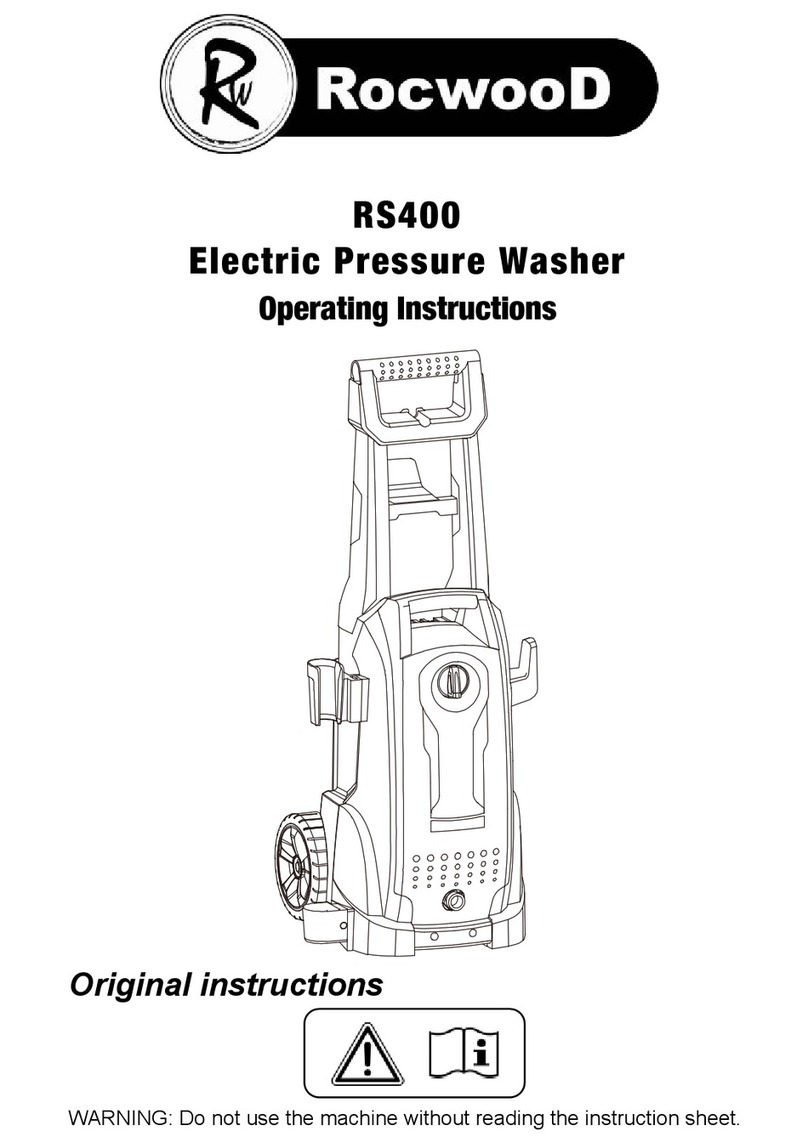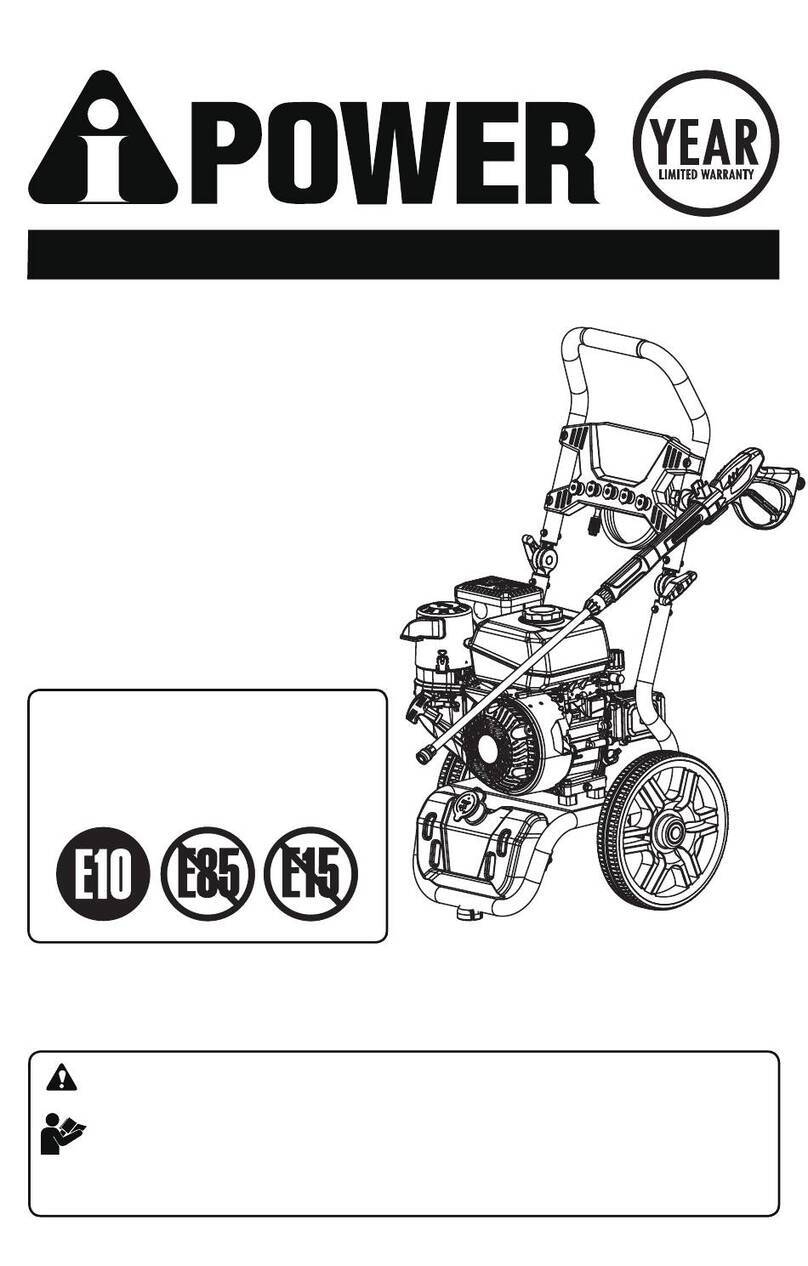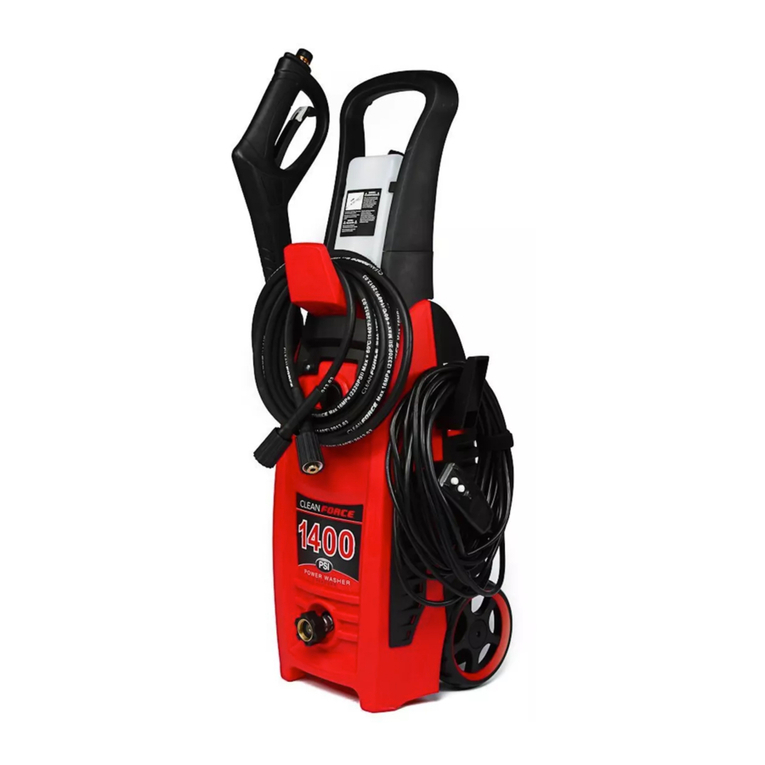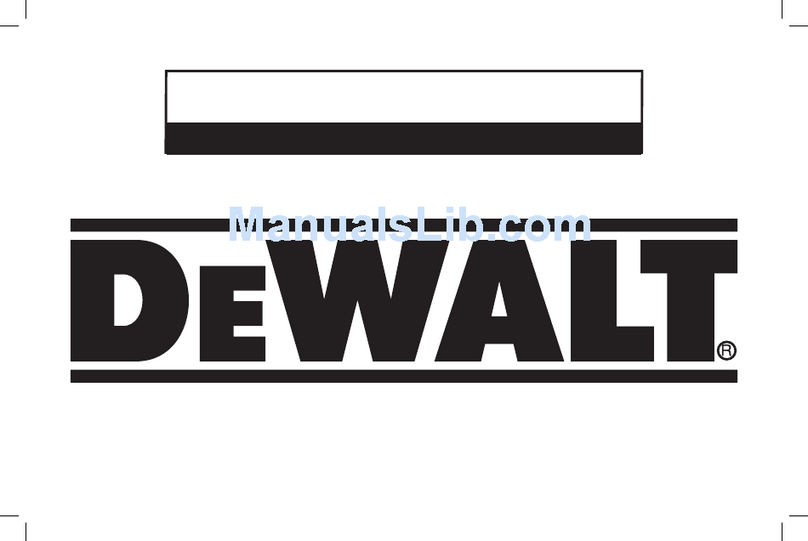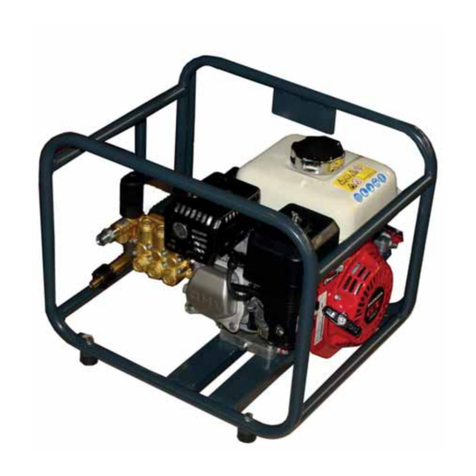RocwooD RS500 User manual

RS500
Electric Pressure Washer
Operating Instructions
Original instructions
WARNING: Do not use the machine without reading the instruction sheet.

Safety and Warning Information
Automatic ON/OFF:
The motor on this pressure washer does
not run continuously. It only runs when the
trigger of the spray gun is squeezed. After
following the start up procedures in this
manual, turn the pressure washer ON and
squeeze the trigger for activation. See
“Operating Instruction” section in this
manual for further details.
WARNING! The electrical supply
connection must be made by a qualified
person and comply with IEC 60364-1. The
electric supply to this machine should
include either a residual current device that
will interrupt the supply if the leakage
current to earth exceeds 30 mA for 30 ms or
a device that will prove the earth circuit.
WARNING! The operating method to be
followed in the event of accident or
breakdown to prevent unsafe situations.
e.g. Contact with detergents - rinse with an
abundance of clean water.
WARNING!The motor of this pressure
washer will NOT run unless the trigger is
squeezed.
Safety Guidelines
This manual contains important information.
This information is provided for SAFETY
and to PREVENT EQUIPMENT
PROBLEMS. To help recognize this
information, observe the following symbols.
DANGER!Danger indicates an
imminently hazardous situation
which, if not avoided, WILL result in
death or serious injury.
WARNING!Warning indicates a
potentially hazardous situation
which, if not avoided, COULD result
in death or serious injury.
CAUTION: Caution indicates a
potentially hazardous situation
which, if not avoided, MAY result in
minor or moderate injury.
NOTE: Information that requires
special attention.
Important Safety Instructions
SAVE THESE INSTRUCTIONS
WARNING! When using the machine the
following precautions should always be
considered:
1. Read all instructions before use.
2. To reduce the risk of injury, close
supervision is necessary when a machine is
used near children.
3. ALWAYS disconnect power before
disassembling or repairing the unit of the
machine.

4. Follow all safety codes as well as the
Occupational Safety and Health Act
(OSHA).
5. Ensure safety devices are operating
properly before using the machine. DO
NOT remove or modify any part of the gun
or unit of the machine.
6. Know how to stop the machine and bleed
pressure quickly. Be thoroughly familiar with
the controls.
7. Stay alert – watch what you are doing.
8. Do not operate the machine when
fatigued or under the influence of alcohol or
drugs.
9. Keep operation area clear of all persons.
10. Do not overreach or stand on unstable
surfaces. Keep good footing and balance at
all times.
11. Follow the maintenance instructions
specified in the manual.
12. Use cleaning agent supplied or
recommend by the manufacturer.
13. Only use the machine on stable ground.
Be careful not to damage the machine
during transportation.
14. In the event of an accident please
always switch off the machine and pull out
the plug from socket outlet, and disconnect
from the water supply.
15. The machine is not intended to be
connected to the potable water mains. If
necessary, please use only inlet hose-set
approved by IEC 61770.
Risk of injection or severe injury. Keep
clear of nozzle. Do not discharge
streams at people. This machine is to be
used only by trained operators. Always
remove lance from gun before cleaning
debris from tip.
• Keep clear of nozzle. NEVER direct high
pressure spray at any person, animal or
yourself.
• Always wear safety glasses or goggles
and protective clothing when operating or
performing maintenance.
• Never put hands or fingers over the spray
tip while operating the unit.
• Never try to stop or deflect leaks with any
body part.
• Always engage the trigger safety latch in
the safe position, even when spraying is
stopped for a moment.
• Always follow detergent manufacturer’s
label recommendations for proper use of
detergents. Always protect eyes, skin, and
respiratory system from detergent use.

WARNING!
SERVICING OF A DOUBLE-
INSULATED MACHINE
In a double-insulated machine, two systems
of insulation are provided instead of
grounding. No grounding means are
provided for a double-insulated machine,
nor should grounding means be added to
the machine. Servicing a double-insulated
machine requires extreme care and
knowledge of the system, and should be
done only by qualified service personnel.
Replacement parts for a double-insulated
machine must be identical to the original
parts. A double-insulated machine is
marked with the words “Double Insulation
"or “Double Insulated.” Machine may also
be marked with symbol shown in Figure 1.
WARNING!Do not use pressure
that exceeds the operating
pressure of any of the parts (hoses,
fittings, etc.) in the pressurized system.
Ensure all equipment and accessories
are rated to withstand the maximum
working pressure of the unit.
WARNING!Explosion hazard.
Never spray flammable liquids or use
pressure washer in areas containing
combustible dust, liquids or vapors.
Never operate the machine in a closed
building or in or near an explosive
environment.
WARNING!Do not spray electrical
apparatus and wiring.
• Never disconnect the high pressure
discharge hose from the machine while the
system is pressurized. To depressurize
machine, turn power and water supply off,
then press gun trigger 2~3 times.
• Never permanently engage the trigger
mechanism on the gun.
• Never operate the machine without all
components properly connected to the
machine (handle, gun/wand assembly,
nozzle, etc.).
WARNING! Equipment damage.
• ALWAYS turn water supply “ON” before
turning pressure washer “ON.” Running
the pump dry causes serious damage.
• Do not operate the pressure washer with
the inlet water screen removed. Keep
screen clear of debris and sediment.
• NEVER operate pressure washer with
broken or missing parts. Check equipment
regularly and repair or replace worn or
damaged parts immediately.

•Use only the nozzle supplied with this
machine.
•Never leave the wand unattended while
the machine is running.
•Never attempt to alter factory settings.
Altering factory settings could damage the
unit and will void the warranty.
•Always hold the gun and wand firmly
when starting and operating the machine.
•NEVER allow the unit to run with the
trigger released (off) for more than one (1)
minute. The resulting heat buildup will
damage the pump.
•The pressure washer is not designed to
pump hot water. NEVER connect it to a hot
water supply as it will significantly reduce
the life of the pump.
•NEVER store the pressure washer
outdoors or where it could freeze. The
pump will be seriously damaged.
•Release the trigger when changing from
high to low pressure modes. Failure to do
so could result in damage.
•Be aware of the recoil caused by the
water jet when the machine is switched on.
CAUTION: Keep the hose away from
sharp objects. Bursting hoses may cause
injury. Examine the hose regularly and
replace it if damaged.
Do not attempt to mend a damaged
hose.
EXTENSION CABLES
The use of an extension cable is not
recommended. Use only extension cables
intended for outdoor use. These are
identified by the mark “Acceptable for
use with outdoor machines; store indoors
while not in use.” Use only extension cables
having an electrical rating equal to or more
than the rating of the machine. Do not use
damaged extension cables.Examine
extension cable before using and replace it if
damaged. Do not abuse extension cable.
Do not pull on the cable to disconnect. Keep
cable away from heat and sharp edges.
Always disconnect cable from receptacle
before disconnecting machine from
extension cable.
DANGER!Failure to follow these
instructions can result in serious injury,
including death.
WARNING!To reduce the risk of
electrocution, keep all connections dry and
off the ground. Do not touch plug with wet
hands.
Machines shall not be used by children.
Children should be supervised to ensure
that they do not play with the machine.
This machine is not intended for use by

persons (including children) with reduced
physical, sensory or mental capabilities, or
lack of experience and knowledge.
WARNING! This machine has been
designed for use with the cleaning agent
supplied or recommended by the
manufacturer. The use of other cleaning
agents or chemicals may adversely affect
the safety of the machine.
WARNING! High pressure jets can be
dangerous if subject to misuse. The jet
must not be directed at persons, live
electrical equipment or the machine itself.
WARNING! Recommend the operator to
wear ear protectors.
WARNING! Do not use the machine
within range of persons unless they wear
protective clothing.
WARNING! Do not direct the jet against
yourself or others in order to clean clothes
or foot-wear.
WARNING! Risk of explosion - Do not
spray flammable liquids.
WARNING! High pressure cleaners shall
not be used by children or untrained
personnel.
WARNING! High pressure hoses, fittings
and couplings are important for the safety of
the machine. Use only hoses, fittings and
couplings recommended by the
manufacturer.
WARNING! Toensure machine safety,
use only original spare parts from the
manufacturer or approved by the
manufacturer.
WARNING! Water that has flown through
backflow preventers is considered to be
non-potable.
WARNING! Disconnect the machine
from its power source by removing the plug
from the socket-outlet during cleaning or
maintenance.
WARNING! Do not use the machine if a
supply cable or important parts of the
machine are damaged, e.g. safety devices,
high pressure hoses, trigger gun.
WARNING! If an extension cable is used,
the plug and socket must be of watertight
construction.
WARNING! Inadequate extension cables
can be dangerous. If an extension cable is
used, it shall be suitable for outdoor use,
and the connection has to be kept dry and
off the ground. It is recommended that this
is accomplished by means of a cable reel
which keeps the socket at least 60mm
above the ground.
WARNING! In order to avoid a hazard
due to inadvertent resetting of the thermal
cut-out, this appliance must not be supplied
through an external switching device, such

as a timer, or connected to a circuit that is
regularly switched on and off by the utility.
Warning symbol: Machine not suitable for
connection to the potable water mains.
WARNING! The machine is intended to
be used at a temperature above 0 degrees.
WARNING! To ensure the machines
safety, please only use original spare parts
(including nozzle) from the manufacturer or
approved by the manufacturer. Do not use
the machine until they are replaced if they
are damaged.
WARNING! Be mindful of the danger of
the kickback force on the spray assembly
when opening the trigger gun and hold the
gun with hands firmly.
WARNING! Connect to the water supply.
The machines are not suitable for
connection to potable water mains.
Connect the machine to the water supply. (It
can be a water container).
Make sure the inlet water pressure keeps
between 0.01MPa and 0.4MPa.
The inlet pipe should at least 5 M long. Do
not use the pipe if the pipe is damaged.
If you want to connect this machine to
potable water mains, you must install a
backflow preventer in the water pipe to
prevent dirty water flow back to the drinking
water system. The backflow preventer
should comply with EN 60335-2-79 ANNEX
AA.
WARNING! Disconnect from the
electrical power supply before carrying out
user maintenance.
If the mains cable is damaged it must be
replaced by the manufacturer, or its service
agent or a similarly qualified person to avoid
a hazard.
Connection
1. Attach the high pressure hose to the
pressure water outlet of the machine.
2. Attach the spray handle to the high
pressure hose. Prior to operating the
machine please ensure that the high
pressure hose has been completely
uncoiled. Whilst the machine is in operation
the hose MUST not loop.
3. Mount the nozzle or any other equipment
you want to use.
4. Connect the machine to the water and
power supplies.

INSTALLATION, ELECTRICAL
AND WATER CONNECTIONS
1. pressure cleaner 2. water supply hose
3. water connection 4. water inlet
5. high pressure hose 6. water outlet
7. spray gun 8. power supply
* No. 2, 3, 8 are not included
Pre-operation
ADJUSTING FAN PATTERN
The angle of spray coming out of the lance
may be adjusted on some lances by
rotating the nozzle. This will vary the spray
pattern
from approximately a 0° narrow high impact
stream to a 60° wide fan spray.
( See Figure2)
A narrow stream has high impact force on
the cleaning surface and results in
maximum deep cleaning in a concentrated
area. However, this narrow high impact
spray must be used cautiously, as it may
damage some surfaces.
A wide fan pattern will distribute the impact
of the water over a larger area, resulting in
excellent cleaning action with a reduced risk
of surface damage, Large surface areas
can be cleaned more quickly using a wide
fan pattern.
NOZZLE CLEANING
INSTRUCTIONS
A clogged or partially clogged nozzle can
cause a significant reduction of water

coming out of the nozzle and cause the unit
to pulsate while spraying.
To clean out the nozzle:
• Turn off and unplug unit.
• Turn off water supply. Relieve any
pressure trapped in the hose by squeezing
trigger 2-3 times.
• Separate lance from gun.
• Rotate nozzle to the narrow stream setting.
This opens up the fan blades.
• Using included tip cleaner, or an unfolded
paper clip, insert wire into the nozzle hole
and move back and forth until debris is
dislodged. (See Figure 3)
• Remove additional debris by
back-flushing water through the nozzle. To
do this, place end of a garden hose (with
water running) to end of nozzle for 30-60
seconds.
ANGLE TO THE CLEANING
SURFACE
When spraying water against a surface,
maximum impact is generated when the
water strikes the surface “head on.”
However, this type of impact tends to cause
dirt particles to imbed in the surface,
thereby preventing the desired cleaning
action.
The optimum angle for spraying water
against a cleaning surface if 45 degrees.
Spraying water against a surface at this
angle provides for the most beneficial
impact force combined with efficient
removal of debris from the surface.

DISTANCE FROM CLEANING
SURFACE
Another factor that determines the impact
force of the water is the distance from the
spray nozzle to the cleaning surface. The
impact force of the water is increased as the
nozzle is moved closer to the surface.
HOW TO AVOID DAMAGING
SURFACES
Damage to cleaning surfaces occurs
because the impact force of the water
exceeds the durability of the surface. The
impact force can be varied by controlling
the three previously noted items. Never use
a narrow high impact stream or a
turbo/rotary nozzle on a surface that is
susceptible to damage. Avoid spraying
windows with a narrow high impact stream
or turbo nozzle as this may cause breakage
The surest way to avoid damaging surfaces
is to follow these steps:
1. Before depressing the trigger, adjust the
nozzle to a wide fan pattern.
2.Place the nozzle approximately 4-5 feet
from and 45 degrees to the cleaning
surface, and depress the trigger.
3. Vary the fan pattern spray angle and the
distance to the cleaning surface until
optimum cleaning efficiency is achieved
without damaging the surface.
TURBO NOZZLE (NOT INCLUDED WITH
ALL MODELS)
A turbo nozzle, sometimes referred to as a
rotary nozzle, is a very effective tool that
can significantly reduce cleaning time. The
turbo nozzle combines the power of a
narrow high impact stream and the
efficiency of a 25 degree fan pattern. This
swirls the narrow high impact stream into a
cone shape that cleans a larger area.
CAUTION: Since a turbo nozzle uses a
narrow high impact stream, only use it in
applications where the cleaning surface
cannot be damaged by narrow high impact
spray. Additionally, the turbo nozzle is NOT
adjustable and cannot be used to apply
detergent.
WATER INLET SCREEN
The water inlet filter must be inspected
regularly, to avoid blockage and restriction
in the water supply to the pump

(fig 7).
Fig 7
DETERGENTS
The use of detergents can dramatically
reduce cleaning time and assist in the
removal of difficult stains. Some detergents
have been customized for pressure washer
use on specific cleaning tasks. These
detergents are approximately as thick as
water. The use of thicker detergents, such
as dish soap, will clog the chemical injection
system and prevent the application of the
detergent.
The cleaning power of detergents comes
from applying them to a surface and giving
the chemicals time to break down the dirt
and grime. Detergents work best when
applied at low pressure.
The combination of chemical action and
high pressure rinsing is very effective. On
vertical surfaces, apply the detergent
starting at the bottom and work your way
upward. This will prevent the detergent from
sliding down and causing streaks. High
pressure rinsing should also progress from
the bottom to top. On particularly tough
stains, it may be necessary to use a brush
in combination with detergents and high
pressure rinsing.
USING DETERGENT
Add detergent to the container. Set the
Adjustable Spray Wand at low pressure
position. (Fig 8)
Trigger gun to spray detergent.
Fig8
FOAM CLEANING METHOD
Be sure to insert the cleaning solution in the
built-in suction pot and remove the tip as
shown in the figure 9. Fig 9

UNITS WITH PATIO CLEANER
INCLUDED
Attach patio cleaner ①to lance extension
②and then connect it to the spray gun
handle ③Note: All these fittings are
bayonet fittings which push in then twist to
lock. Note: Prior to using the patio cleaner
always check that you will not damage the
surface, on an inconspicuous test area
first.
UNITS WITH BRUSHES
INCLUDED
The Electric Pressure Washer is supplied
with a rotary brush and a fixed brush. Both
have soft bristles and can be used in
conjunction with the detergent dispenser to
apply detergent to the surface you are
cleaning. These are ideal for cleaning car
bodywork, windows etc. This is a low
pressure setting. The brushes connect to
the lance extension. There is an adapter
with each brush; you must fit it before
connecting to the lance extension.
Note: Do not fit brushes when the power is
on.
Note: The brushes cannot be fitted into the
trigger gun and must be used in conjunction
with the lance extension.
Operation
The following cleaning procedure will help
you to organize your cleaning task, and
ensure that you achieve the most beneficial
results in the shortest amount of time.
Remember to use the spraying/cleaning

techniques previously listed.
1. Surface preparation
Before starting a pressure wash cleaning
job, it is important to prepare the surface
that is to be cleaned. This is done by
cleaning the area of furniture and making
sure that all windows and doors are closed
tight. In addition, you should make sure that
all plants and trees adjacent to the cleaning
area are protected by a drop cloth. This will
ensure that your plants won’t be sprayed by
the detergents.
2. Initial High Pressure Rinse
The next step is to spray the area with
water to clear off any dirt or grime that may
have collected on the surface. This will
allow your detergent to attack the deep
down dirt that has worked its way into the
surface. Before depressing the trigger,
adjust the nozzle to a wide fan pattern and
slowly adjust to the desired spray pattern.
This will help you avoid applying too much
concentrated spray to the surface which
could cause damage.
3. Detergent Application
USE THE INSTRUCTIONS
APPROPRIATE FOR MODEL
PURCHASED
NOTE: Use only detergents formulated for
pressure washers.
NOTE: Test detergent in an inconspicuous
area before use.
Figure 5 Detergent application
Units with Detergent Applicator
Included
Follow manufacturer’s label directions for
mixing correct concentrations of detergent
to water. The ratio through the pressure
washer is approximately 5.4% (1 to 19).
1. Unscrew the top of the detergent
applicator and fill applicator with detergent.
2. Replace top on applicator.
3. Remove lance from gun.
4. Attach detergent applicator to gun. (See
Figure 8)

5. Apply detergent so it thoroughly covers
cleaning surface. Apply from bottom to top
to prevent detergent from sliding down and
streaking.
6. Allow detergent to remain on the surface
for a few minutes. This is a good time to use
a brush to lightly scrub heavily soiled areas.
Never allow detergent to dry on the
cleaning surface.
7. Remove detergent applicator from gun
and replace with the lance, or remove
applicator from end of lance.
8. Rinse detergent from surface.
NOTE: Flush detergent applicator with
clear water following each use.
4. Final Rinse
Start final rinse at bottom and work upward.
Make sure you thoroughly rinse the surface
and that all detergent has been removed.
5. Shut down
1. Be sure all detergent is flushed from
the system.
2. Turn off motor.
3. Turn off water supply.
4. After motor and water supply are turned
off, depress the trigger to depressurize
system.
CAUTION: NEVER turn water supply off
before turning motor off. Serious damage
could occur to the pump and/or motor.
WARNING! NEVER disconnect high
pressure discharge hose from machine
while system is pressurized. To
depressurize, turn motor off, turn water
supply off and squeeze gun trigger 2-3
times.
5. After each use, wipe all surfaces of the
pressure washer with a clean, damp cloth.
6. Storage
Do not store pressure washer outdoors.
Do not store pressure washer where it
might freeze.
TIPS FOR EXTENDING THE LIFE
OF YOUR PRESSURE WASHER
1. Never operate unit without water.
2. Pressure washer is not meant to pump

hot water. Never connect to hot water
supply – this will significantly reduce life of
the pump.
3. Using detergent other than others brand
may cause damage to pump components
(O-rings, etc). This also applies to
chemicals such as bleach, dish soap, etc.
4. Never operate unit for more than one (1)
minute without spraying water. Resulting
heat buildup will damage pump.
5. Before adjusting nozzle’s pressure
(high-to-low or low-to-high) release trigger.
Failure to do so will reduce life of o-rings in
lance.
MAJOR TECHNICAL DATA
ITEM RS400
Working pressure 11MPa (110 bar)
Allowable pressure 16.5MPa (165 bar)
Working flow rate 6.3 l/min
Max. flow rate 7.8 l/min
Max. pressure water supply 0.4MPa (4 bar)
Motor Capacity 2200W
Power Supply Voltage 240V~50Hz
Max. Water Temperature 50℃

ELECTRICAL DIAGRAM
Possible problems and solutions:
Symptom Possible cause(s) Corrective Action(s)
No detergent 1. Lance nozzle is not in low 1. Slide lance nozzle into low
suction (units pressure. pressure position.
with tanks) 2. High pressure extension 2. Remove high pressure
hose or high pressure extension hose or use
is too long. hose shorter than 25 feet.
3. Injector clogged on pump.3. Call the dealer.
No detergent Detergent applicator is clogged.1. Clean applicator with warm
Suction (units water.
with attachable 2. Replace applicator.
applicators)
Unit begins to Overheated, overloaded or Turn off unit and call the dealer.
smoke damaged motor.

Symptom Possible cause(s) Corrective Action(s)
Pressure washer 1. Unit is pressurized.
does not start up 2. Plug is not well connected
or electric socket is faulty.
1. Squeeze trigger on gun.
2. Check plug, socket and
fuse.
3. Remove extension cable.
3. Extension cable is too long or
wire size too small.
4. Main voltage supply is too low. 4. Check that main supply
voltage is adequate.
5. Thermal safety switch has 5. Switch off unit and allow
Tripped.motor to cool down.
Pump does not 1. Water inlet filter is clogged.1. Clean water inlet filter.
reach necessary 2. Pump is sucking air from hose 2. Check that connections and
pressure connections.locking ring are properly
tightened.
3. Nozzle is worn or not correct 3. Call the dealer.
Size.
4. Unloader is clogged or worn.4. Call the dealer.
5. Valve is clogged or worn. 5.Call the dealer.
Fluctuating 1. Pump is sucking in air.1. Check that hoses and
Pressure connections are tight.
2. Clogged nozzle.2. Clean with tip cleaner.
3. Valves dirty, worn of stuck.3. Call the dealer.
4. Water seals worn.4. Call the dealer.
Motor stops 1. Extension cable is too long or 1. Remove extension cable.
suddenly wire size too small.
2. Thermal safety switch has 2. Check that main supply
tripped due to overheating.voltage corresponds to
specifications.

INSPECTION & MAINTENANCE
For safety, make sure you clean the machine every 3 months. Before working, make sure
you inspect the filter and the nozzle, make sure there is no impurity. After working, make
sure there is no water in the pump or the hose.
If the machine needs to be repaired in the guarantee period, please return the machine to
the shop. You need to provide the purchase receipt in order to get a repair or
replacement.
Before packing away, the machine should be cleaned.
Store the machine in the dry.
For transportation safety. The machine should comply with ISTA.

RS500 EXPLODED VIEW Pump & Motor Parts

No Part Name QTY No Part Name QTY
1 WATER OUTLET JOINT 1 36 PLUNGER SPRING 1×11.2×5×15.9 1
2 SPRING 0.6×10.5×4×7.8 1 37 CONNECTING NUT RING 1
3 O-RING 22×2.4 1 38 Y-RING 4X11X2.5 1
4 BLOCKING 1 39 O-RING 22×1.91
5 O-RING 5×1.8 1 40 CONNECTING NUT 1
6 VALVE CORE 1 41 WATERPROFF SHIELD FOR SWITCH 1
7 VALVE CORE SPRING 1 42 SWITCH AROUND SHELLS 1+1
8 JACKET 1 43 MICRO SWITCH 1
9 O-RING 4.5×1.8 1 44 SCREW INTERNAL HEXAGONAL M6×25 4
10 O-RING 16×2.4 1 45 PUMP 1
11 PISTON 1 46 O-RING 58×2.65 1
12 PISTON SPRING 1 47 Y-RING 12×18×4 3
13 PISTON SEAT 1 48 O-RING 18×1.83
14 O-RING 5.6×1.8 1 49 MIDDLE SETS 3
15 O-RING 12×1.8 1 50 O-RING 16×1.9 3
16 VALVE SEAT 1 51 INTERVAL SETS 3
17 PUMP HEAD 1 52 SKELETON SEAL 12×20×4 3
18 SCREW INTERNAL HEXAGONAL M6×25 2 53 PLUNGER SPRING 3
19 SPRING WASHER Φ6 7 54 PLUNGER 3
Table of contents
Other RocwooD Pressure Washer manuals
Popular Pressure Washer manuals by other brands
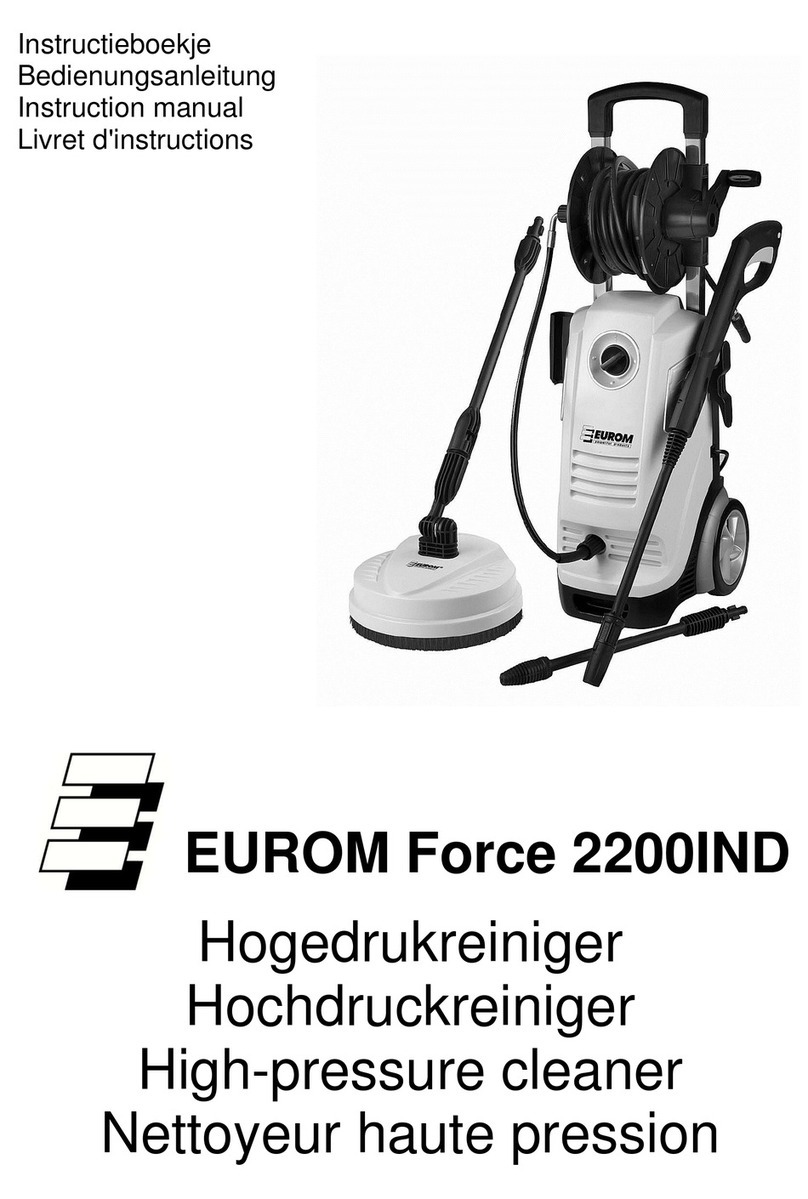
EUROM
EUROM Force 2200IND instruction manual
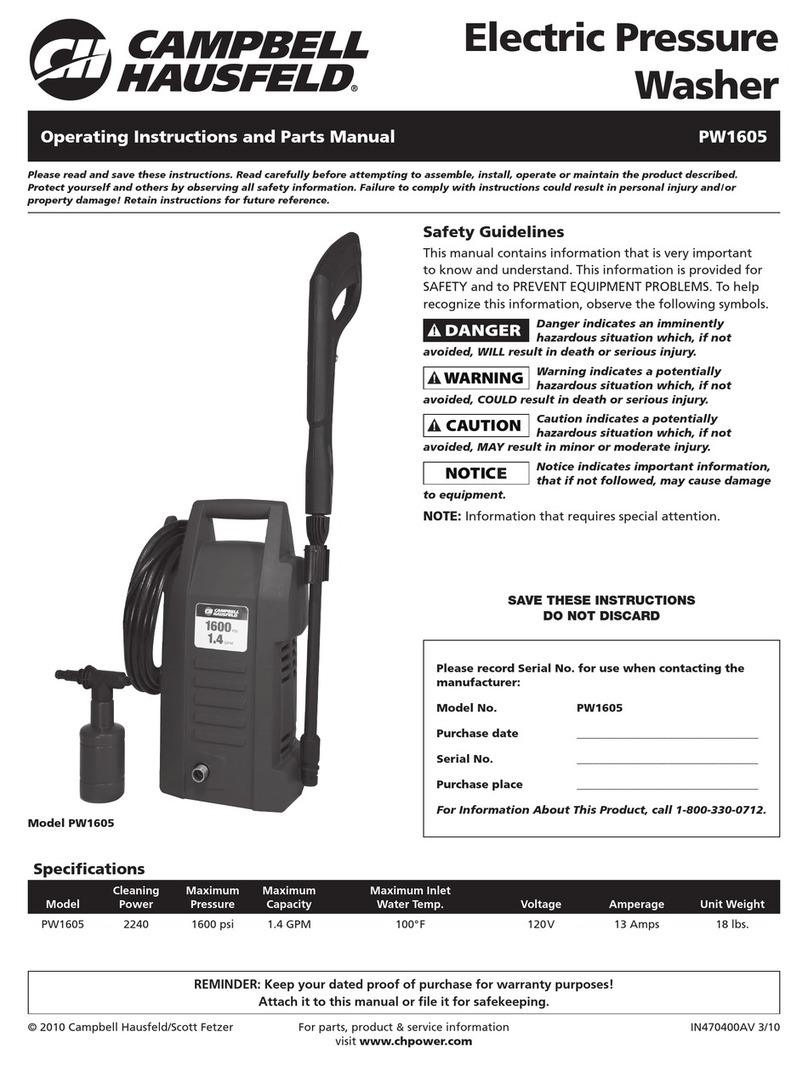
Campbell Hausfeld
Campbell Hausfeld PW1605 Operating instructions and parts manual

North Star
North Star 157117 owner's manual

Briggs & Stratton
Briggs & Stratton BPW3000PX manual
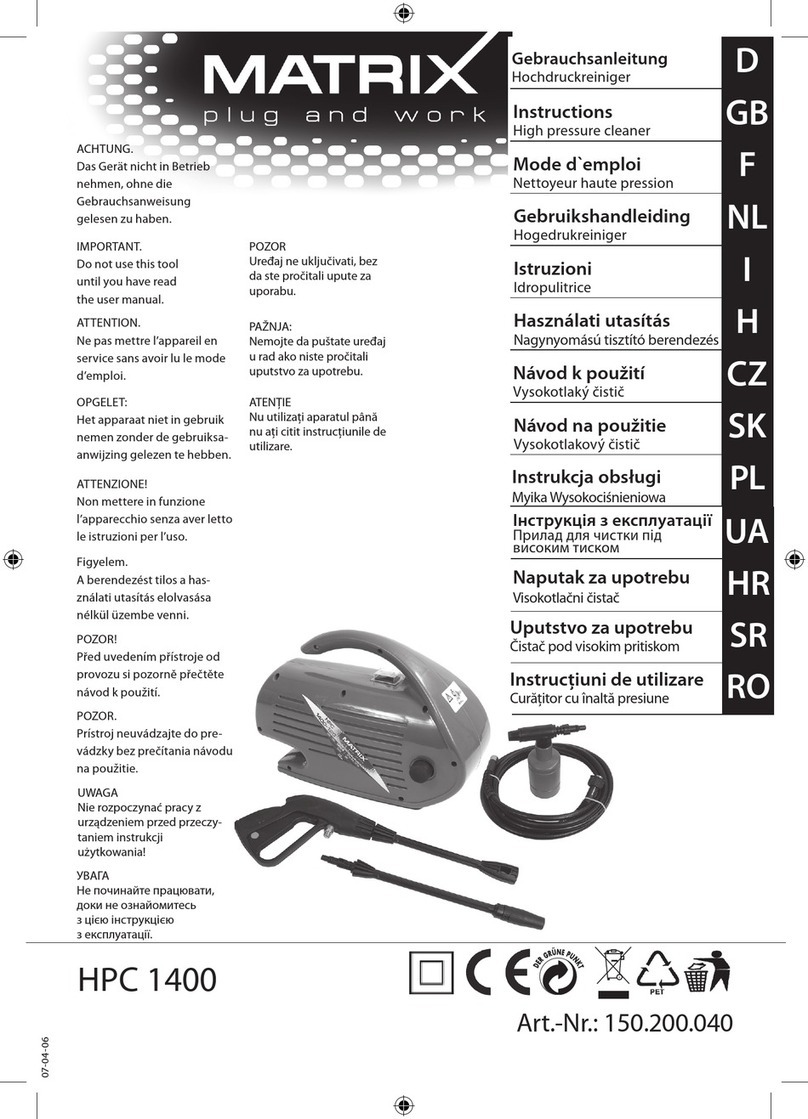
Matrix
Matrix HPC 1400 instructions
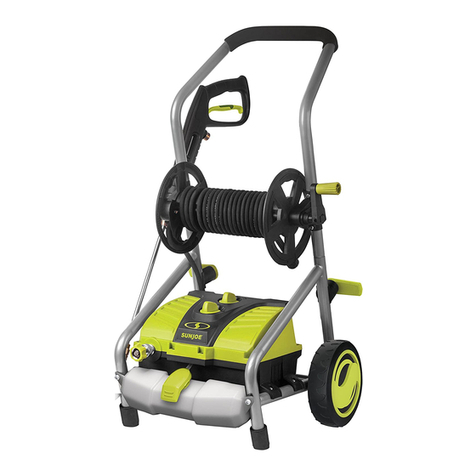
SNOWJOE
SNOWJOE SUNJOE SPX4001-RM Operator's manual
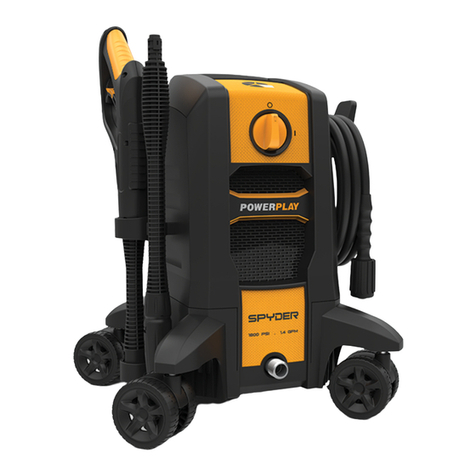
Powerplay
Powerplay SPYDER SPY1800D Assembly, care and use instructions
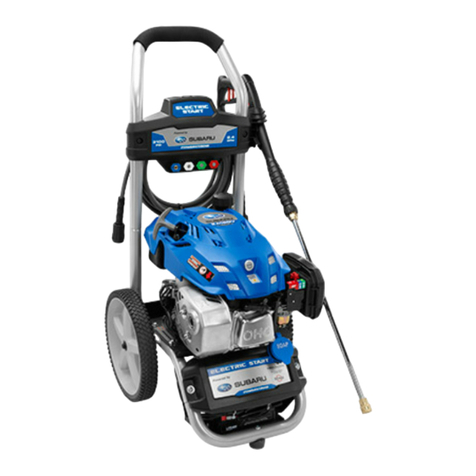
Power Stroke
Power Stroke PS80312E Operator's manual
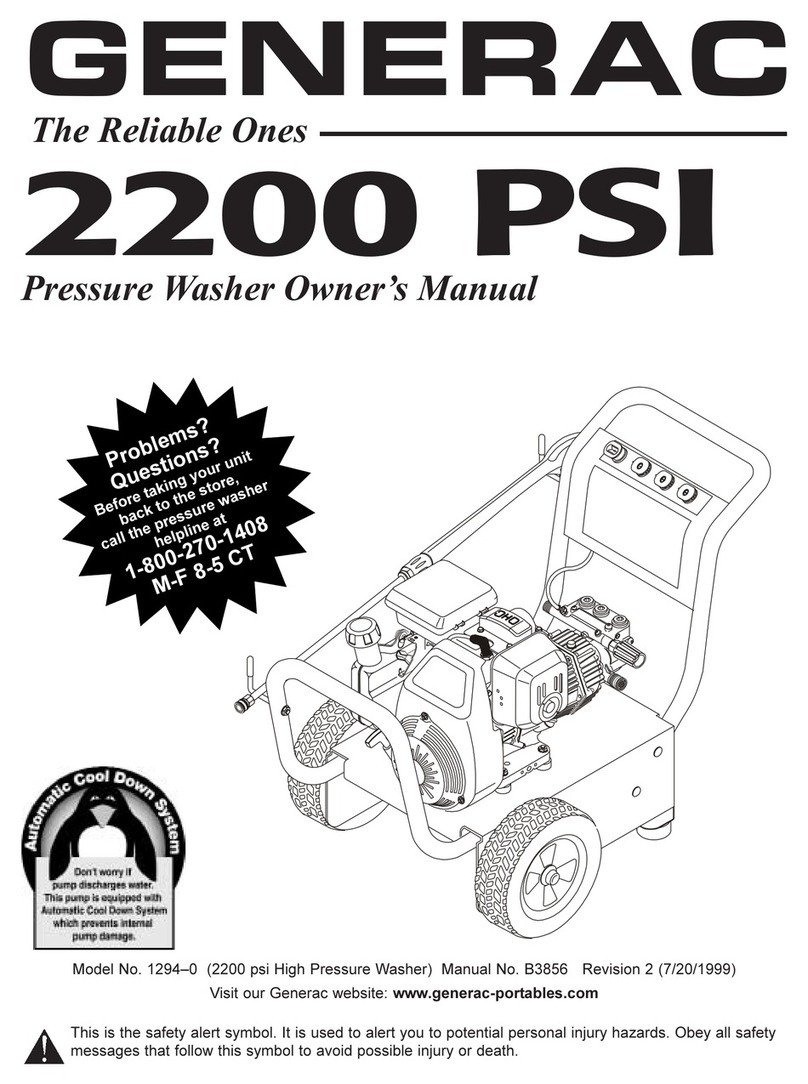
Generac Portable Products
Generac Portable Products 2200 PSI owner's manual
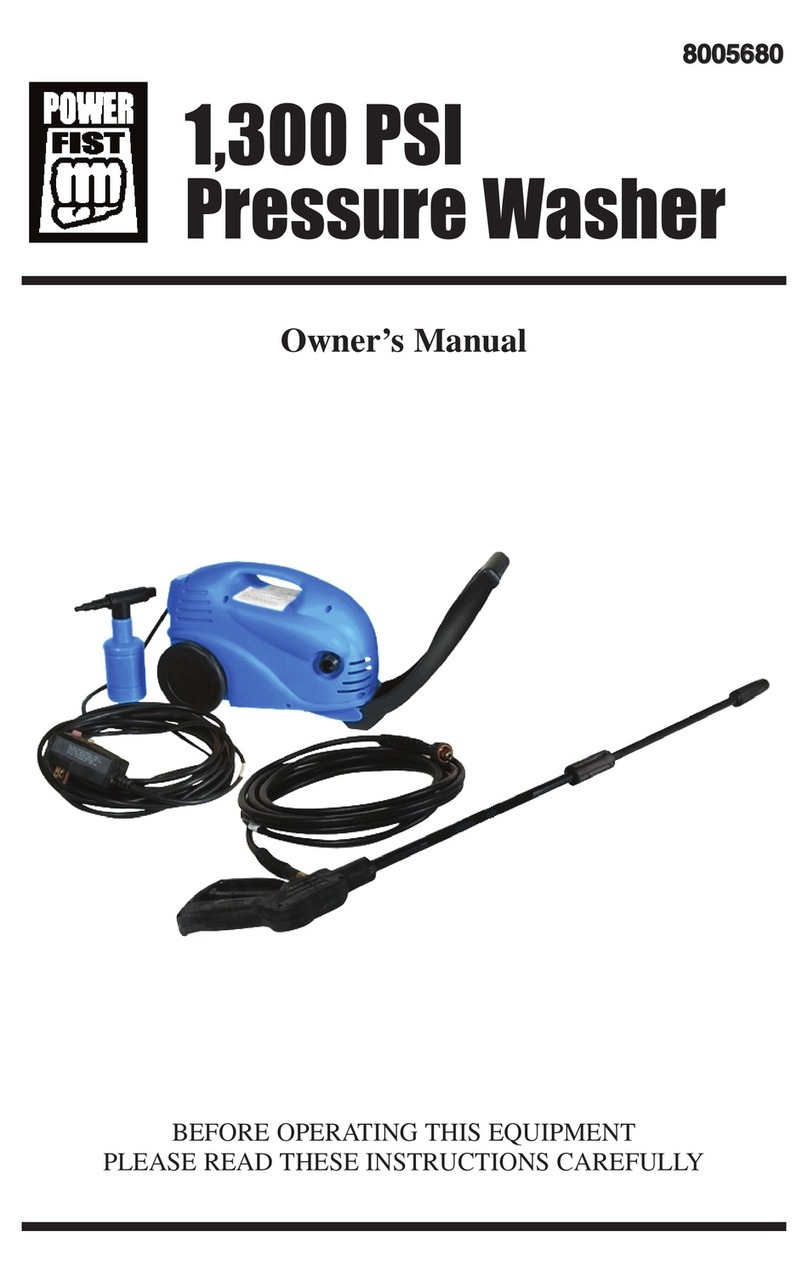
Power Fist
Power Fist 8005680 owner's manual
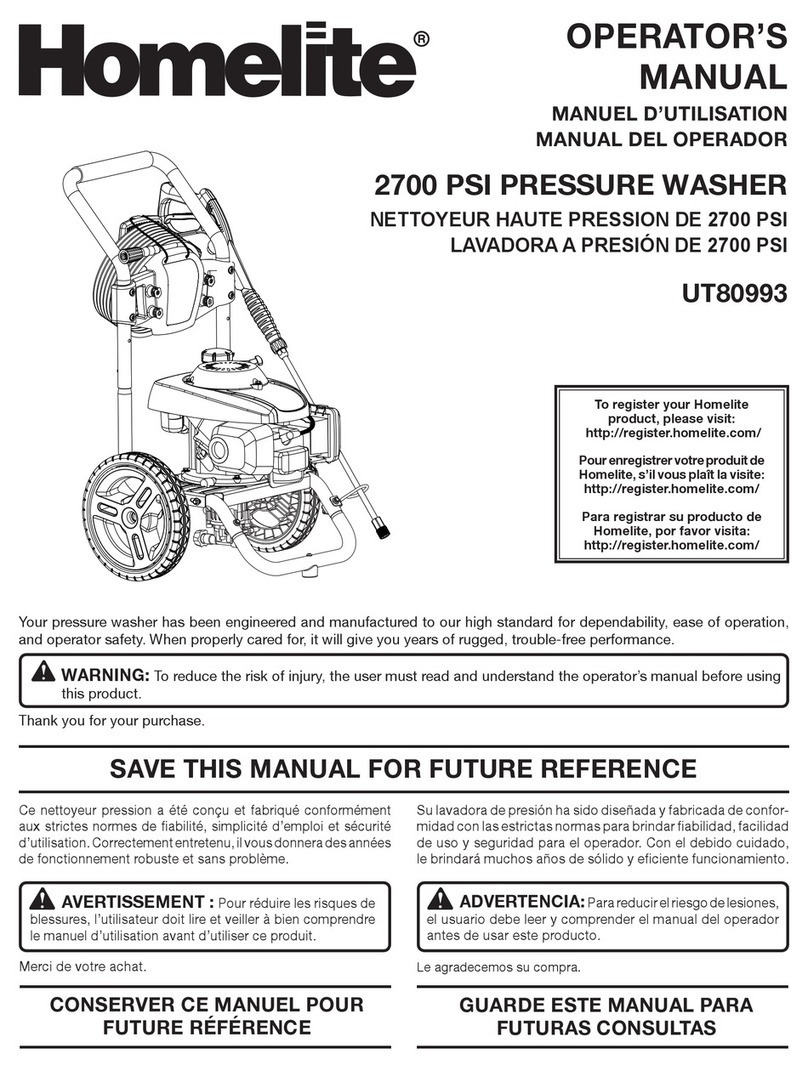
Homelite
Homelite UT80993 SERIES Operator's manual
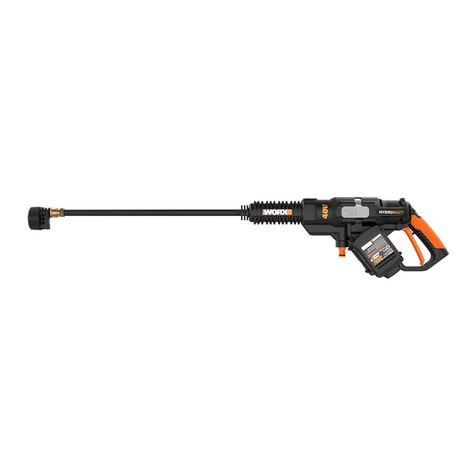
Worx
Worx Hydroshot WG644 manual


